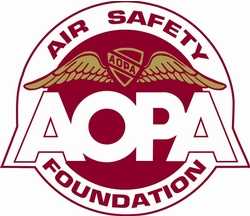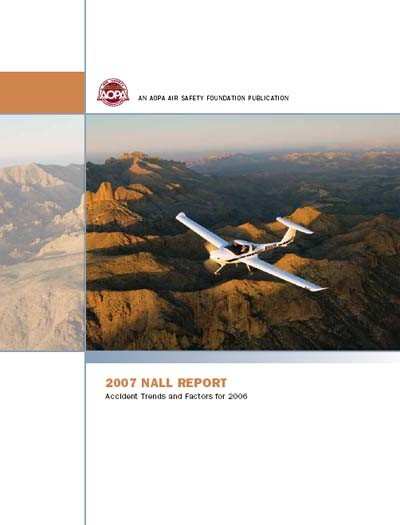Notes Pilots Are Also Flying Less Hours
 On Friday, the AOPA Air Safety
Foundation released its 2007 Joseph T. Nall Report, an analysis of
general aviation accidents from the previous year. The report shows
many signs an increasing emphasis on safety among pilots is paying
real dividends.
On Friday, the AOPA Air Safety
Foundation released its 2007 Joseph T. Nall Report, an analysis of
general aviation accidents from the previous year. The report shows
many signs an increasing emphasis on safety among pilots is paying
real dividends.
The report shows general aviation accidents are continuing on a
downward trend. The number of accidents per 100,000 flight hours
decreased from 7.19 in 1997 to an all-time low of 6.32 in 2006,
while the fatal accident rate dropped 7.4 percent during the same
time frame.
"Even with a slight uptick in the number of hours flown in 2006
compared to 2005, pilots are flying fewer hours than they did five
years ago," said Bruce Landsberg, AOPA Air Safety Foundation
Executive Director. "But the accident rate shows pilots are flying
safer."
As an example, the Foundation notes from 2002 to 2006, the
number of accidents declined by 10.8 percent, while the number of
estimated flight hours decreased only 5.9 percent. The general
aviation accident trend for 2006 also matches the long-term
downward trend, with total accidents decreasing 8.3 percent and
fatal accidents decreasing 6.5 percent from 2005.
"This trend information is more reliable than yearly snapshots,"
Landsberg said. "In addition to seeing that the overall accident
rate is decreasing, we’re also able to see which areas of
flight tend to have the most accidents and then tailor our safety
education efforts."
Not all the news is encouraging, however. Confirming what many
pilots have suspected, the report reveals the long-term trend for
weather-related accidents is increasing. Visual flight rules (VFR)
flight into instrument conditions continues to account for the
majority of fatal weather accidents in single-engine aircraft.
"One possible explanation is that more cross-country flying is
being undertaken in new, technologically advanced aircraft,"
Landsberg writes in the report. "The negative trend in weather
accidents also illustrates the difficulty of teaching judgment
skills to a broad group of pilots flying under diverse
circumstances."
The Air Safety Foundation is working to educate pilots about
weather-related accidents. Earlier this year the Foundation and FAA
mailed more than 180,000 CDs to instrument-rated pilots with
information about avoiding thunderstorms. Two of the
foundation’s online courses focus specifically on weather,
"Weather Wise: Ceiling and Visibility" and "Weather Wise:
Thunderstorms and ATC." Both are available on the Air Safety
Foundation’s website.
Another trend is a decrease in maneuvering flight accidents,
down from 33.1 percent of fatal accidents in 2005 to 25 percent in
2006. However, fatal descent and approach accidents increased from
10.3 percent to 19 percent.
"No matter what accident statistics you look at, pilot decision
making continues to be the leading cause of all accidents,"
Landsberg said. For the last several years, the Foundation has
provided free decision making DVDs to all new private pilots and
for those just getting their instrument rating to help them to
apply their new skills safely.

"We as the general aviation community have a lot of work to do
to continue improving pilot safety," Landsberg added, "and the Air
Safety Foundation will do its part to educate pilots through free,
informative, and entertaining safety courses, seminars, and
materials."
 ANN's Daily Aero-Linx (05.06.25)
ANN's Daily Aero-Linx (05.06.25) ANN's Daily Aero-Term (05.06.25): Ultrahigh Frequency (UHF)
ANN's Daily Aero-Term (05.06.25): Ultrahigh Frequency (UHF) ANN FAQ: Q&A 101
ANN FAQ: Q&A 101 Classic Aero-TV: Virtual Reality Painting--PPG Leverages Technology for Training
Classic Aero-TV: Virtual Reality Painting--PPG Leverages Technology for Training Airborne 05.02.25: Joby Crewed Milestone, Diamond Club, Canadian Pilot Insurance
Airborne 05.02.25: Joby Crewed Milestone, Diamond Club, Canadian Pilot Insurance




